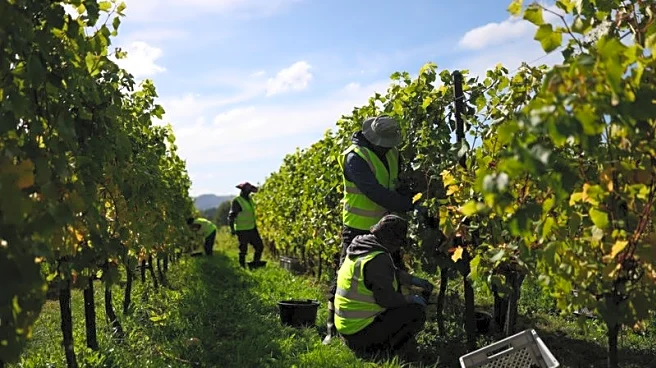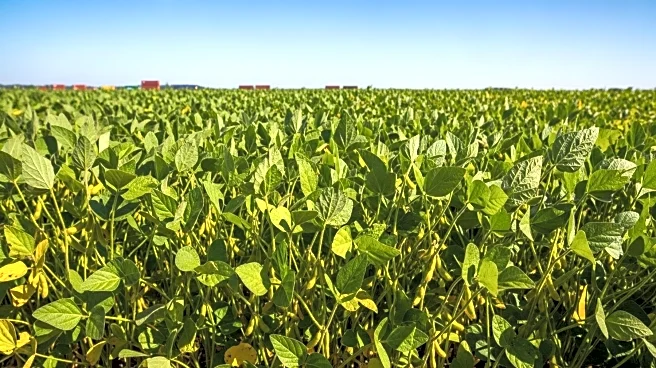What's Happening?
The wool market has seen a significant recovery, providing relief to small-stock farmers after several seasons of weak performance. The Cape Wools SA Merino Indicator has risen almost 30% compared to the
same time last year, and about 20% higher than the first auction of this season. The average price for certified wool has surpassed R200/kg for the first time since the 2021/22 season. This price increase is attributed to low inventory levels and China's economic recovery post-pandemic. The shortage in Australia, particularly in the 21-micron segment, has been a key factor, as many Australian farmers have exited the wool industry. South African farmers are benefiting from producing more certified wool and maintaining high standards.
Why It's Important?
The recovery in wool prices is crucial for U.S. farmers who have faced financial challenges due to previous low prices. The increase in wool prices, along with strong lamb prices, offers a chance for livestock farmers to stabilize their operations. The global supply shortage, particularly in Australia, has created opportunities for U.S. farmers to capitalize on rising demand. However, the sustainability of these prices remains uncertain, with potential fluctuations depending on consumer demand in China and Europe. The improved prices may encourage farmers to remain in the industry, supporting rural economies and agricultural sectors.
What's Next?
The wool market is expected to stabilize, with early indicators from Australia suggesting prices will not fall further. However, the main uncertainty lies in consumer demand in China's domestic market and whether it can absorb existing stock. The European market's participation remains a concern, as greater involvement is needed to ensure sustained demand. Farmers are hopeful that prices will rise more steadily in the future, avoiding rapid fluctuations that could impact their financial planning.
Beyond the Headlines
The wool industry's recovery highlights the importance of certified wool production and maintaining high standards. The research on wool's carbon footprint presents wool in a favorable light, potentially influencing consumer perceptions and demand. The industry's focus on sustainability and environmental impact could drive long-term shifts in agricultural practices and market dynamics.













